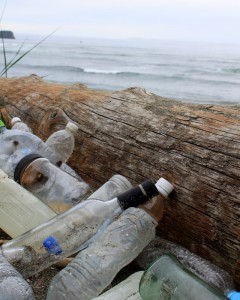 On Dec. 10, 5 Gyres Institute published a new report in the journal PLOS ONE that is the first global estimate of plastic pollution — both micro- and macroplastic. The study culminates over six years and 50,000 nautical miles of pelagic plastics research, the most comprehensive study of its kind to date, according to the 5 Gyres Institute. The report estimates that some 5.25 trillion plastic particles weighing about 244 million kg (269,000 tons) are floating in the world’s oceans, which is much higher than previous reports that looked only at one size class of plastics.
On Dec. 10, 5 Gyres Institute published a new report in the journal PLOS ONE that is the first global estimate of plastic pollution — both micro- and macroplastic. The study culminates over six years and 50,000 nautical miles of pelagic plastics research, the most comprehensive study of its kind to date, according to the 5 Gyres Institute. The report estimates that some 5.25 trillion plastic particles weighing about 244 million kg (269,000 tons) are floating in the world’s oceans, which is much higher than previous reports that looked only at one size class of plastics.
The new research also demonstrated some unexpected findings, garbage patches of the five subtropical gyres contained fewer microplastics than previously reported. However, researchers found microplastics in varying concentrations throughout the world’s oceans, with a wide distribution of the smallest microplastics in remote ocean regions such as the subpolar gyres.
Researchers found that large plastics are abundant near coastlines and degrade in the five subtropical gyres into microplastics. The gyres are not final resting places for plastics, but are instead shredders and redistributors of trash. In the gyres, sunlight, oxidation, embrittlement, and other processes degrade large plastic pieces into tiny fragments, which are then redistributed through currents or by animals.



